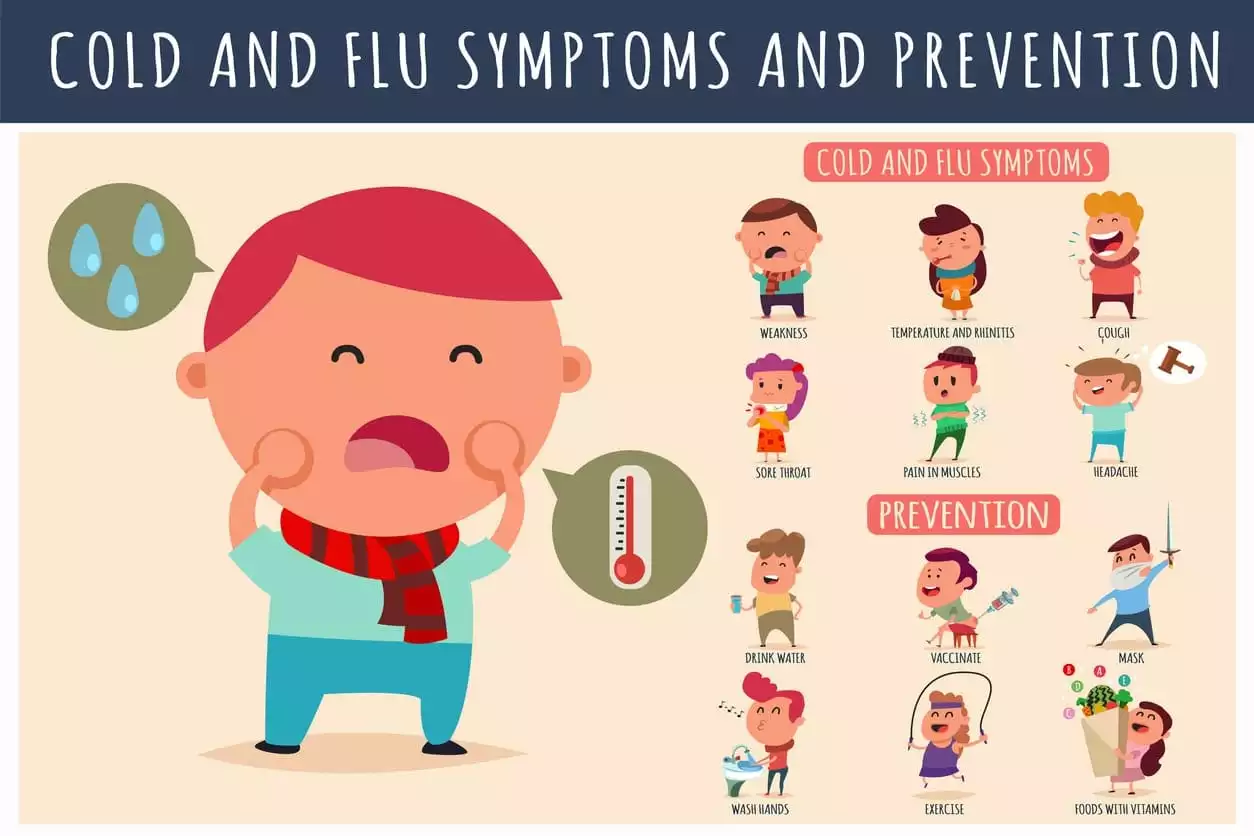
Winter is coming; technically it’s already here. This winter season, learn the difference between common cold vs. flu symptoms to get proper treatment.
We’re already seeing a lot of common winter viruses, especially respiratory syncytial virus (RSV) among small children and, of course, the common cold.
Experts have noted that the flu is off to a slower start than last season, but that doesn’t mean we can let our guards down.
The 2018 to 2019 flu season is officially underway. Unfortunately, seven children have already lost their lives.
Cold vs. Flu Symptoms and Treatment
One of the most common questions we hear this time of year is how to determine the difference between a cold and the flu.
While the two can have similar symptoms, there are some key differences you should watch out for.
The common cold needs to run its course, but early treatment for the flu might decrease the severity of your symptoms or shorten the duration of your illness.
To get prepared, here are the common differences in cold vs. flu symptoms and treatment.
Common Cold Symptoms
While a bad cold is certainly nothing to sneeze at, the main difference in cold vs. flu is symptoms is this: colds are not usually as severe in nature as the flu.
A regular cold has a slower, more gradual onset. You may start with a mild sore throat and notice your symptoms worsening over the span of a few days.
It is common to be sneezing and have a sore throat or stuffy nose with a cold. Some people develop coughs and chest discomfort, but these are generally very mild compared to those who have the flu.
Fevers are possible with a cold, but they are usually rare and mild. You might also experience low-grade aches, chills, or fatigue, but these are not sure-fire symptoms. It’s also possible to have a headache with the common cold, especially with sinus pressure and congestion, but severe headaches are rare.
Progression of Symptoms
- Cold symptoms often become progressively worse over the first two to three days with mucous becoming thicker and darker as your condition progresses.
- The first three days are also the time period where you are most contagious; to prevent passing it on, limit your contact with other people.
- Your symptoms should begin to improve after the first three days, subsiding within a week to 10 days.
Talk to your doctor if you don’t see any improvement after a full week. A lack of change for the better is a sign you may have developed a sinus infection.
Treating a Cold
Colds are commonly treated with decongestant medications. There are plenty of over-the-counter (OTC) options to choose from, each with varying ingredients and strengths.
Many will include expectorants, pain relievers, and/or fever reducers.
You should be especially cautious with these medications if you struggle with high blood pressure. Some cold medications can interfere with your regular drug therapy, make your blood pressure even higher, or cause other heart symptoms.
Talk to your doctor or pharmacist if you aren’t sure what type of medication is best to treat your cold.
Want something natural?
- Warm tea with honey have been timeless favorites for centuries, and many people still turn to them today. Both may help soothe sore throat symptoms and congestion.
- Zinc and vitamin C won’t prevent colds, but there is some evidence to prove they may shorten the duration of your symptoms.
- Warm compresses on your face can promote sinus drainage and the use of nasal flushes may help with congestion as well.
- Sinus strips might help you breathe better at night, too.
Common Flu Symptoms
One of the biggest differences between cold vs. flu symptoms is the onset.
The flu often feels like it hit you out of absolutely nowhere. You can wake up in the morning feeling completely healthy and suddenly, over the course of an hour, start to feel abruptly ill. Common symptoms of the flu include:
- Chills
- Fevers
- Fatigue
- Weakness
- Body aches
- Headaches
- Coughs
- Chest discomfort
- While possible, it’s not as common to have a sore throat and stuffy nose or to be sneezing with the flu.
Progression of Symptoms
The worst of your flu symptoms should begin to get better after the first two to three days, with significant improvement within five days. Your flu remains contagious for up to seven days after the onset of symptoms.
Children, the elderly, and those with heart and lung conditions need to be especially conscious of changes in their health while battling the flu. It is not uncommon for those who are more susceptible to illness to develop pneumonia or other complications.
Watch out for a fever that returns after you’ve been fever-free for a couple of days, especially if it is combined with symptoms like shortness of breath.
Contact your doctor immediately if you have
- Persistent symptoms
- Become lethargic
- Experience intense muscle weakness in your limbs
- Difficulty breathing
The flu can be extremely dangerous for infants, toddlers, elders, and people who are immunocompromised.
For this reason, all patients who fall into these categories should be seen right away any time the flu is suspected. This is imperative to prevent severe complications like pneumonia.
Treating the Flu
Cold vs. flu symptoms differ slightly, but so does the treatment.
Call your doctor right away if you suspect you have the flu, especially if your symptoms came on abruptly. Obtaining treatment within the first couple of days may qualify you for antiviral drugs, like Tamiflu, designed to help decrease the severity of your symptoms and help you feel better faster.
Otherwise, cold and flu formulas with decongestants, pain relievers, and fever reducers are appropriate here, too.
Be conscious of the amount of pain reliever or fever reducer contained in your formula of choice.
Some have smaller doses than you may find helpful for your headaches or body aches, but adding additional may exceed your daily limit for the safe consumption of acetaminophen products like Tylenol.
Talk to your doctor or pharmacist if you need help finding the right combination of medications to treat your unique symptoms.
As for help at home?
- Stay warm and drink plenty of fluids.
- Honey is soothing to the throat, as are lozenges.
- Running a humidifier or sitting in a steamy bathroom may help to soothe your cough and chest discomfort so you can breathe better.
Can’t seem to shake those aches and pains?
Try an Epsom salts bath in warm (but not hot) water. There is some evidence that the magnesium within may help to relax your muscles; better still, there’s no need to worry about side effects.
Conclusion
There are some differences with cold vs. flu symptoms.
No matter which illness you have, limit your exposure to other people as much as possible during your contagious periods.
To avoid both of these illness, it’s important to get an annual flu shot.
Wear a face mask if you need to go out in public, wash your hands frequently, and give your body plenty of time to rest. While you may be tempted to push your limits, resting will reduce your risk of complications and a prolonged illness.
Be well this winter!

 info@burtsrx.com
info@burtsrx.com

